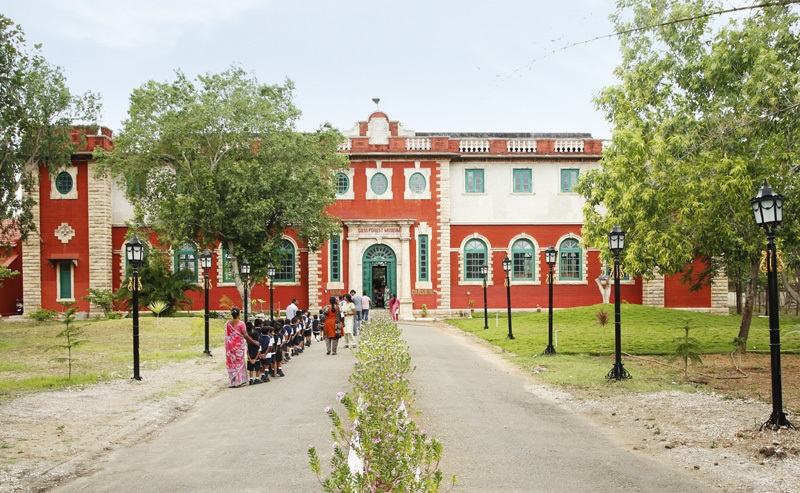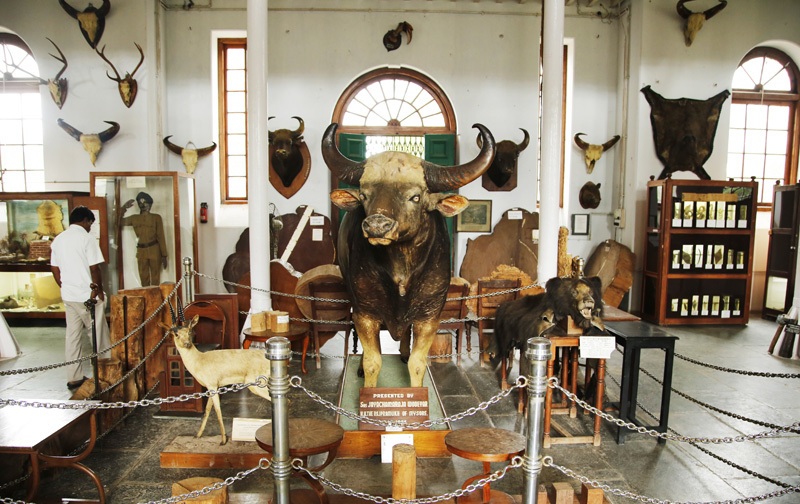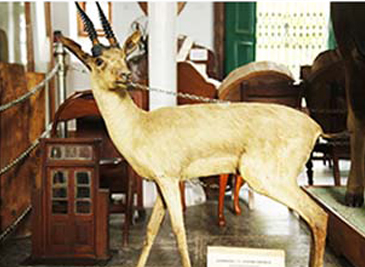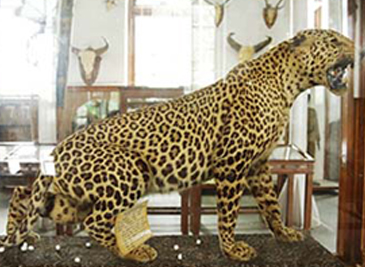

Gass Forest Museum is a government run natural history museum situated at Coimbatore, Tamil Nadu. Gass Forest Museum (GFM) in Coimbatore is a destination with a difference. This is a natural history museum and is the first institution in India to house exhibits related to forestry. This government run museum is located in the verdant Forest College Campus on Cowley Brown Road. It is housed in a heritage building that is over a century old.
Gass forest museum is at located at Cowley Brown Road, It is one of the oldest buildings in Coimbatore and it is over 100 years old, in a way the museum building itself is an heritage site. Museum is within Forest college campus grounds and it feels like a mini forest within the city. Apart from wildlife the exhibits include Arms used in olden days, wood crafts, huge collection of insects, cultural artifacts and many more. Main Attractions are the Preserved and stuffed animals, birds and reptiles.
It was established in 1902 by H.A. Gass, the then Conservator of Forests of Coimbatore circle. Gass conceived the idea of starting a museum to represent various aspects of forestry though a comprehensive collection.

It was started in one of the rooms of the conservator's office building and was extended to the verandah and some other portions of the District Forest Office. The present building built in 1915. It is made of red stone and built in British Gothic style. The ventilation is such that light spreads throughout the hall. The folding in the four corners give the building the strength to withstand perpendicular seismic impact, if any. The iron pillars in the hall were imported from Britain. During World War-II, the museum was closed to accommodate evacuees from Greece and Malta


There are about 10000 exhibits presently on display at the Gass Forest Museum. The exhibits on display at the museum cover various disciplines in science and geography like botany, zoology, geology etc. Of the rare artifacts in the museum is a piece of asteroid which is believed to be several million years old, a full grown male stuffed Indian guar which would have weighed over a ton when alive and a stuffed albino crow. At present the numbers of insects which have been preserved here are more than 1200 and are growing slowly. This museum seems attractive to people off all age groups as often youth can be spotted posing in front of the Indian Gaur, young children roaring at the preserved leopard and elderly studying the exhibits with deep thoughts.
Exhibits Videos



